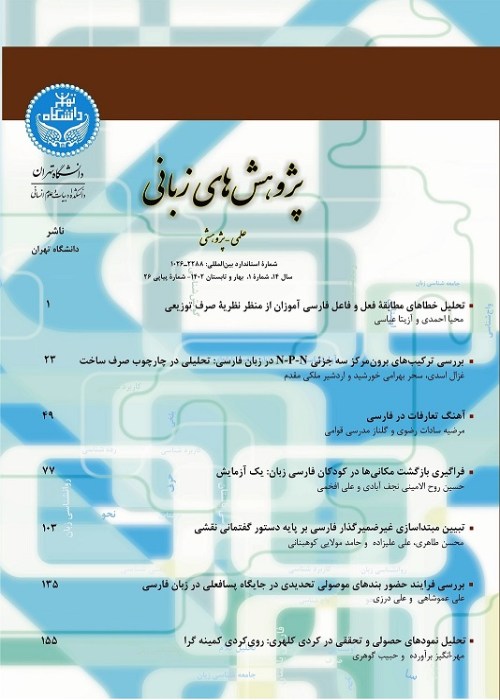The Intonation of Ta’arof in Persian
Ta’arof has a special place in the Iranian culture and its linguistic repesentations are various and considerable. Since Ta’arof expressions are used in interactive contexts by native speakers of Persian, it is expected that the intonation patterns of these expressions be affected by discourse factors and vary as a function of context. The present study adopts Brazil’s (1975, 1978, 1997) and Brazil et al.’s (1980) approach to intonation with the main purpose of investigating the intonation patterns of Ta’arofs in Persian. The distinguishing feature of Brazil’s approach to intonation is its focus on the effect of discoursal context on intonation patterns each with a meaning of its own. In his approach, “meaning” does not refer to attitudes such as “surprised” or “expectant”, nor to grammatical meanings such as “interrogative” or “declarative”. Rather, it refers to the interactive role of intonation i.e., constant evaluation of discourse by the speaker and choosing the appropriate intonation pattern to achieve coherence and cohesion in discourse. To this end, the intonation features of tone and the prominence level of the onset (key) and tonic (termination) syllables were annotated and analyzed using the Praat software in 29 Ta’arof expressions in the Iranian series Hayula. Results showed that the dominent tone in these expressions is level or fall. Keys were mostly mid or high, while terminations were mostly mid. Considering the fact that intonation patterns of each Ta’arof expression depends on its situational and discoursal context, the Taarof expression ̒Gorbunet beram̓ ‘(lit.) may I be sacrificed for you’ with 4 different representations was chosen and analysed as one of the most frequent Ta’arof expression in the corpus of this study. Results showed that Ta’arof expressions although fixed lexically and syntactically, show different intonation patterns due to the influence of social norms such as politeness, power relations, the prediction of listener’s judgment, and listener’s agreement expectation.
- حق عضویت دریافتی صرف حمایت از نشریات عضو و نگهداری، تکمیل و توسعه مگیران میشود.
- پرداخت حق اشتراک و دانلود مقالات اجازه بازنشر آن در سایر رسانههای چاپی و دیجیتال را به کاربر نمیدهد.



